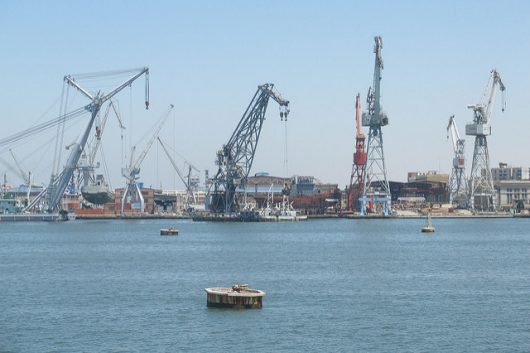New Gas Reserves Could Be a Solution to Egypt’s Energy Needs

Egypt, a nation once plagued by frequent power blackouts, may have found a remedy to its power needs. The discovery of the Noor natural gas field, the largest offshore field in the Mediterranean Sea, could prove a permanent solution to Egypt’s energy needs and put it on the road to self-sufficiency. This discovery could help Egypt become an exporter of natural gas as well as encourage more foreign investment.
To contextualize what kind of impact this discovery is, one need only compare the Zohr natural gas field, which had been Egypt’s largest natural gas field until 2015, and the Noor natural gas field. The Zohr field is approximately 60 square miles and contains around 30 trillion cubic feet of gas. Noor, on the other hand, is about three times the size of Zohr and could contain as much as 90 trillion cubic feet of gas.
Egypt’s Power Problem
The dual threat of ballooning demand and declining production have put a constant strain on the Egyptian energy sector. In 2014, when Egypt endured one of its most dire energy crises, parts of the country experienced six power cuts per day lasting about two hours at a time. Electricity demand was 20 percent greater than power stations could provide.
In large part, gas shortages were due to an uprising against former President Hosni Mubarak in 2011. Divisive political struggles deterred investors and tourists, which in turn caused foreign currency reserves to decline. In order to meet demand, Egypt was forced to sacrifice important gas exports.
Solution to Egypt’s Energy Needs
Noor is instrumental in reducing the gap between total gas consumption in Egypt (4.9 billion cubic feet per day in 2016) and total daily production in Egypt (4 billion cubic feet). In order to meet its energy needs and compensate for excessive consumption, Egypt has been forced to import liquefied natural gas (LNG) at high costs.
In 2015/2016, Egypt purchased 89 cargoes of liquefied natural gas at a staggering $2.2 billion. With the Zohr field, in addition to the newly discovered Noor field, Egypt could end these purchases by the end of next year, according to Egypt’s oil minister Tarek El-Molla. This will enable Egypt to become independent in their natural gas production and make them a net exporter.
How Does This Help
By satisfying local demand, Egypt can spend significantly less on energy. Using those savings, Egypt can invest in improved infrastructure, healthcare and education. By turning to grid-connected gas, Egypt can avoid the fuel subsidies associated with liquid petroleum gas (LPG) use. Fuel subsidies have accounted for anywhere from 18-20 percent of Egypt’s expenditure, an amount equal to 5-7 percent of GDP.
According to the World Bank’s Country Director for Egypt, Hartwig Schafer, “Conversion to piped natural gas will help give households a safer, more reliable and cheaper supply of gas.” As households make the transition from high-subsidized, imported LPG to locally-produced natural gas, the government will save $201 per household per year.
The Noor gas field will not only facilitate Egypt’s transition from a net importer of natural gas to a net exporter, but it will provide the much-needed solution to Egypt’s energy needs by allowing Egyptians to have a reliable source of power at a much lower cost.
– McAfee Sheehan
Photo: Flickr
